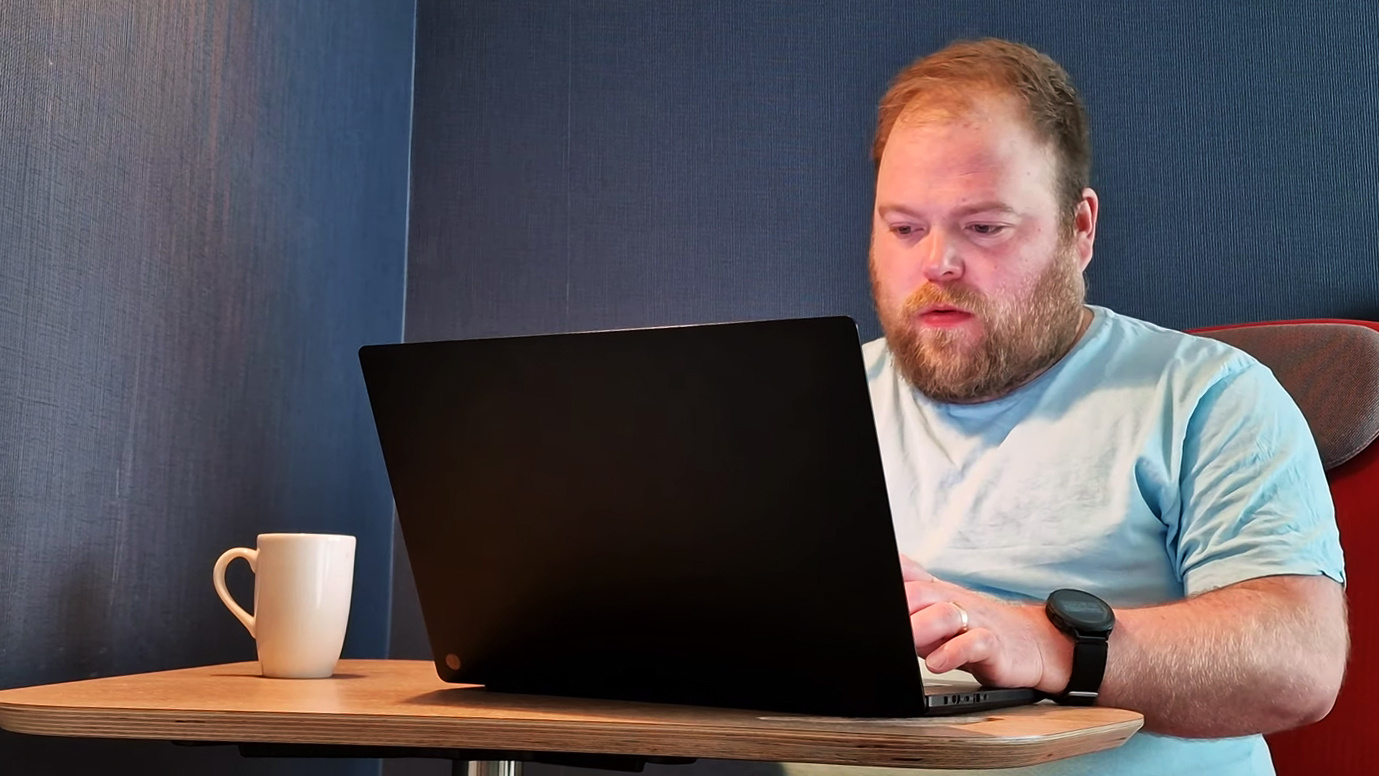
This summer ASUS unveiled its latest P16 ProArt Laptop, developed for video creators, and we've had the opportunity to use it for a month, testing at home, on location, and on the go editing various video projects along the way. How does it perform?
As someone who’s always been fortunate enough to work in a creative field, the need for more computing power is frankly never-ending, especially in this developing era of more powerful cameras and tools.
Being relatively new here at RedShark, I must admit I still get very excited at having the opportunity to test out equipment on a higher tier than I usually get to play with. Actually holding equipment I usually only see in press releases and other tech review channels is like meeting a celebrity in real life, seeing that they are indeed real and now can impress or disappoint me depending on how they actually exist in the real world, not in a curated media existence media.
The ProArt P16 laptop is ASUS’ challenge to Apple’s Macbook Pro, built for people like me who still want to get things done but still use Windows. The ProArt line has always been just out of reach for me, primarily due to their higher price tags beyond either my personal or employer's budget. But now I have one in my hands; even starting at the professional price point of £2499/ $2799, I can say that you really do get what you pay for.
 I am a big fan of the low profile it keeps, nothing about this screams MAXIMUM GPU
I am a big fan of the low profile it keeps, nothing about this screams MAXIMUM GPU
Build quality
The build quality straight out of the box is outstanding: it feels incredibly rugged with its aluminum chassis in a Nano Black finish. ASUS is so confident in its durability that they’ve given it a US MIL-STD 810H military-grade standard certification for high humidity, heat, and dust. Just in case I ever find myself working in a rainforest or desert (one can dream). For me at least, this feels like owning a 4x4 that never leaves the paved road (not even to pass runners like me when there is a perfectly fine bit of grass RIGHT THERE EDWARD). You may not need it, but knowing that extra toughness is there brings a certain peace of mind.
It also solves an issue I usually have with modern laptops: the severe lack of ports (thanks again, Apple). Thankfully, the P16 offers more than expected, plus it even has a card reader.
|
On the left side, there is:
|
On the right, you have:
|
While the proprietary power plug is necessary for the beefy NVIDIA graphics card, I can’t help but feel a teenie bit disappointed. I’ve gotten used to the joys and convenience of using a USB-C port to power my laptop.
The ProArt P16’s 16-inch 4K OLED display is another welcome addition with 100% DCI-P3 color accuracy, ensuring that what I see on the screen is precisely what gets shown elsewhere, something crucial for tasks like video editing and design. ASUS has been delivering fantastic screens for a while now, and this is no different. It’s even touchscreen, which I didn’t use a lot, but was welcome when I did - especially when needing to erase things in Photoshop quickly.
Testing on the show floor
IBC2024 was the perfect opportunity for us to put this laptop through its paces and ASUS loaned us the super, fully equipped version with 64GB of RAM and an NVIDIA RTX4070 GPU inside.

The single photo of me working at IBC (I'm sharing a link to a client on that phone I promise)
I’d never experienced this much sheer power in my hands before, and I was pleasantly surprised at how compact it felt. Weighing in at just 4.08 lbs (1.85 kg) and measuring 13.97" (35.5 cm) across, it fits perfectly in my well-worn laptop bag. I’ve always appreciated ProArt’s minimalist aesthetic - a welcome contrast to the RGB-heavy, 'MOAR POWAAR' style of hardware I had usually worked with. This is a professional laptop for professionals, and it certainly made me feel that way.
At most conventions we work with a multitude of 4K+ resolution videos, applying heavy-load effects like warp stabilization, and require super-fast exports to upload drafts as quickly as possible, which is essential when delivering ‘the news’. It’s in those intense moments, when everything needs to happen RIGHT NOW, that I truly appreciate what a ‘high-powered’ laptop gives you.
At NAB 2024 earlier this year, I remember the dread of needing to add in certain effects and transitions that take minutes to render on my older laptop, minutes that compound quickly when deadlines loom; the pain and faff of using proxies; the weird is-it-frozen-or-just-loading moments as everything crunches to a white screen to get the video output ready. All this was gone and just instantly working at a press of a button with the P16.
All I could do was reflect on the minutes/hours saved, that would lead to me looking at my phone so as not to disrupt the fragile equilibrium of my less powerful machine. Tie that back with the mental load cost of constantly switching tasks and I truly see how much time (and ultimately money) is saved by having these things simply work.
Due to the amount of intensive work that was done on this laptop, I had seldom used it not plugged in, as I’d often needed to use the full powers of the incredible NVIDIA RTX4070 graphics card. There were a few times though when I needed to send the odd email or quickly crop a handful of photos throughout the day and achieved all I needed it to without issue. I haven’t done a deep dive into the plethora of power-saving settings, but I definitely felt confident I could tweak it to work for as long as I would need it to unplugged.
Back at base
 My current beautiful smooth running home working setup
My current beautiful smooth running home working setup
While working from home, I have it all wired in to connect seamlessly to all my essential gear including: multiple screens, a Stream Deck, USB microphone, and external drives but the real advantage is being able to take that same power on the road. While I could always do with an ubër powerful workstation, having a laptop with this much capability offers a level of flexibility that a stationary setup simply cannot match. Due to my current setup, I also haven’t yet used the ASUS Dial, which sits at the top left of the touchpad and reportedly allows precise control in software like Adobe Premiere Pro and After Effects.
Right now I feel like Cinderella, counting down the days until the magic fades and my NVIDIA Geforce-powered carriage turns back into a pumpkin. After experiencing the luxury of this premium machine, it's going to be tough to go back to anything less. The ProArt P16 exceeded my expectations, delivering everything I needed in a surprisingly compact, robust form factor. It's the ideal tool for creatives who can afford to invest in the luxury of time its performance brings.
The ASUS ProArt P16 starts at £2499 in the UK and $2699 in the USA.
tl;dr
- The $2699 ASUS ProArt P16 laptop is designed for video creators and offers impressive computing power for video editing and design tasks.
- It boasts a durable aluminum chassis with MIL-STD 810H military-grade certification, making it suitable for challenging working environments.
- The laptop features an array of ports, including USB 4 Type-C, HDMI 2.1, and a card reader, addressing the common issue of port availability in modern laptops.
- Its 16-inch 4K OLED display with 100% DCI-P3 color accuracy and touchscreen functionality enhances the user experience for tasks like video editing and design.
Tags: Post & VFX Featured Editing ASUS ASUS ProArt


Comments